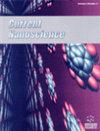A Comprehensive Review on Co-Crystals: Transforming Drug Delivery with Enhanced Solubility and Bioavailability
IF 1.5
4区 材料科学
Q4 BIOTECHNOLOGY & APPLIED MICROBIOLOGY
引用次数: 0
Abstract
Poor solubility and bioavailability of various drug compounds are the biggest challenges faced by researchers and industrialists, hindering their therapeutic efficacy. Researchers have developed a versatile approach to enhance the solubility and bioavailability of the drug i.e., co-crystallization. Pharmaceutical co-crystals are solid, crystalline materials consisting of API and co-formers that have supramolecular chemistry with one another. Co-crystallization helps in enhancing a drug’s physico-chemical properties, such as bioavailability, solubility and dissolution, preserving its therapeutic effect. The API and co-former in co-crystals are bound to each other via hydrogen bonding, π-stacking, and Van der Waals forces. Several methods to prepare co-crystals, such as solvent evaporation method, grinding method, cooling crystallization method, etc, and various research reports, including all the methods of preparation are discussed in this review article. Conventional marketed products and patents on co-crystals are also included. Data has been gathered, and relevant literature reports have been examined utilizing a variety of search engines, including Google Scholar, ScienceDirect, Pubmed, and Google patents. After reviewing the literature, the researchers found that the cocrystallization method is one the simplest method to enhance drug bioavailability and solubility. Moreover, it enhances the pharmacokinetics parameters, pharmacodynamics properties, and melting point of the drug. In this review article, the researchers have compiled the recent literature reports on enhanced drug solubility via co-crystallization method. The researchers concluded that this review article can help other researchers by providing them with recent literature on this article and can compare the various methods of enhancing drug solubility and bioavailability. It also consists of compiled data of patents and marketed formulations prepared by the co-crystallization technique. Thus, co-crystallization could be established as a versatile approach for enhancing drug solubility and bioavailability.共晶体综述:通过提高溶解度和生物利用度改变给药方式
各种药物化合物的溶解性和生物利用度差是研究人员和工业家面临的最大挑战,这阻碍了它们的治疗效果。研究人员开发了一种多功能方法来提高药物的溶解度和生物利用度,即共结晶。药物共晶体是由具有超分子化学性质的原料药和共配体组成的固体结晶材料。共结晶有助于增强药物的物理化学特性,如生物利用度、溶解度和溶出度,保持药物的治疗效果。共晶体中的原料药和共配体通过氢键、π堆积和范德华力相互结合。本综述文章讨论了制备共晶体的几种方法,如溶剂蒸发法、研磨法、冷却结晶法等,以及包括所有制备方法在内的各种研究报告。此外,还包括有关共晶体的常规市场产品和专利。研究人员收集了相关数据,并利用各种搜索引擎(包括 Google Scholar、ScienceDirect、Pubmed 和 Google Patents)对相关文献报告进行了研究。在查阅文献后,研究人员发现,共晶法是提高药物生物利用度和溶解度的最简单方法之一。此外,它还能提高药物的药代动力学参数、药效学特性和熔点。在这篇综述文章中,研究人员汇编了近期有关通过共结晶法提高药物溶解度的文献报道。研究人员认为,这篇综述文章可以帮助其他研究人员,为他们提供有关这篇文章的最新文献,并对提高药物溶解度和生物利用度的各种方法进行比较。文章还汇编了通过共结晶技术制备的专利和上市制剂的数据。因此,共结晶技术可作为提高药物溶解度和生物利用度的一种通用方法。
本文章由计算机程序翻译,如有差异,请以英文原文为准。
求助全文
约1分钟内获得全文
求助全文
来源期刊

Current Nanoscience
工程技术-材料科学:综合
CiteScore
3.50
自引率
6.70%
发文量
83
审稿时长
4.4 months
期刊介绍:
Current Nanoscience publishes (a) Authoritative/Mini Reviews, and (b) Original Research and Highlights written by experts covering the most recent advances in nanoscience and nanotechnology. All aspects of the field are represented including nano-structures, nano-bubbles, nano-droplets and nanofluids. Applications of nanoscience in physics, material science, chemistry, synthesis, environmental science, electronics, biomedical nanotechnology, biomedical engineering, biotechnology, medicine and pharmaceuticals are also covered. The journal is essential to all researches involved in nanoscience and its applied and fundamental areas of science, chemistry, physics, material science, engineering and medicine.
Current Nanoscience also welcomes submissions on the following topics of Nanoscience and Nanotechnology:
Nanoelectronics and photonics
Advanced Nanomaterials
Nanofabrication and measurement
Nanobiotechnology and nanomedicine
Nanotechnology for energy
Sensors and actuator
Computational nanoscience and technology.
 求助内容:
求助内容: 应助结果提醒方式:
应助结果提醒方式:


